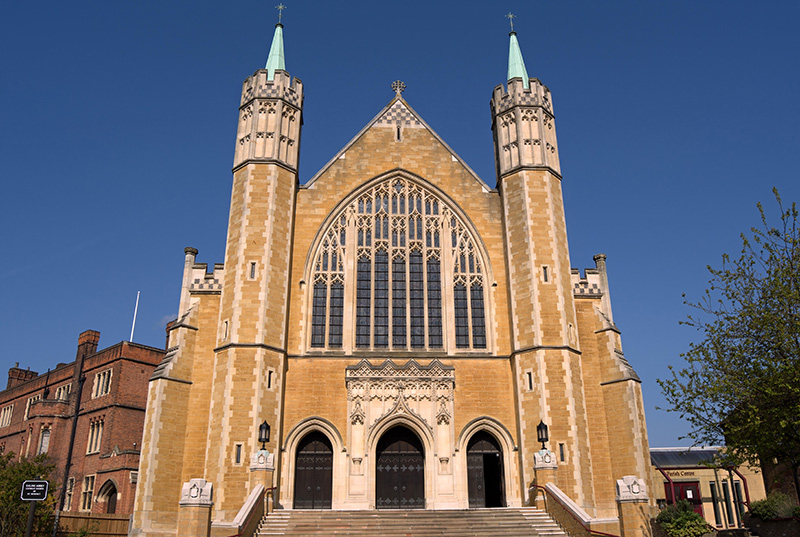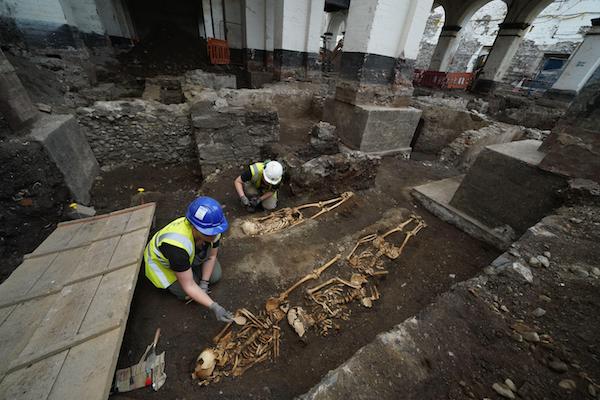An excavation in central Dublin has uncovered a burial site with over one hundred medieval skeletons and the remains of an eleventh-century church, which archaeologists say sheds light on how late Viking era Dublin became Christian.
The excavation is taking place within the walls of what was once Boland’s bakery, a Victorian-era biscuit factory. It is being carried out ahead of the building of the new 98-bed eight-storey Bullitt Hotel, owned by the Belfast-based Beannchor Group.
In the twelfth century the site was part of lands belonging to St Mary’s Abbey which was associated with the Savigniac and Cistercian orders.
Founded in 1139, St Mary’s was Ireland’s largest and wealthiest abbey, but it was demolished after 1540 following the dissolution of the monasteries by Henry VIII.
Archaeologists excavating the site said they had expected to find burials from the twelfth century linked to St Mary’s. However, they also uncovered two skeletons which predate the foundation of St Mary’s as well as the remnants of an older ecclesiastical building.
Carbon dating of one of the graves shows it predates St Mary’s Abbey by 100 years, indicating the presence of a Christian settlement on the site prior to 1139.
Edmond O’Donovan, director of excavations for Courtney Deery Heritage Consultancy, told The Irish Times: “Most of the skeletons are medieval, dating between 1200 and 1540, but there are definitely two that are 1,000 years old. One of them is dated by their association with a kite-shaped stick pin, very datable to the eleventh century, and probably a shroud pin.”
He said the burials show that when the abbey was established there was already an existing church and this was not previously documented before the dig.
“That tells us a little bit about the relationship between the late Viking population and Christianity – we see a Viking-age Dublin that is becoming Christian before the coming of the Anglo-Normans.”
The dig also provided information on how stones from the twelfth-century abbey were reused in the construction of a Presbyterian meeting house in the seventeenth century and which was substantially rebuilt in the eighteenth.
The development plan for the site will utilise elements of the Presbyterian meeting house in its concept for a new bar and restaurant.
The foundations of a merchant’s house constructed around 1700 were also uncovered in the dig. The house belonged to settlers who came to Dublin after King William of Orange ascended the English throne following the Battle of the Boyne in 1690.



 Loading ...
Loading ...